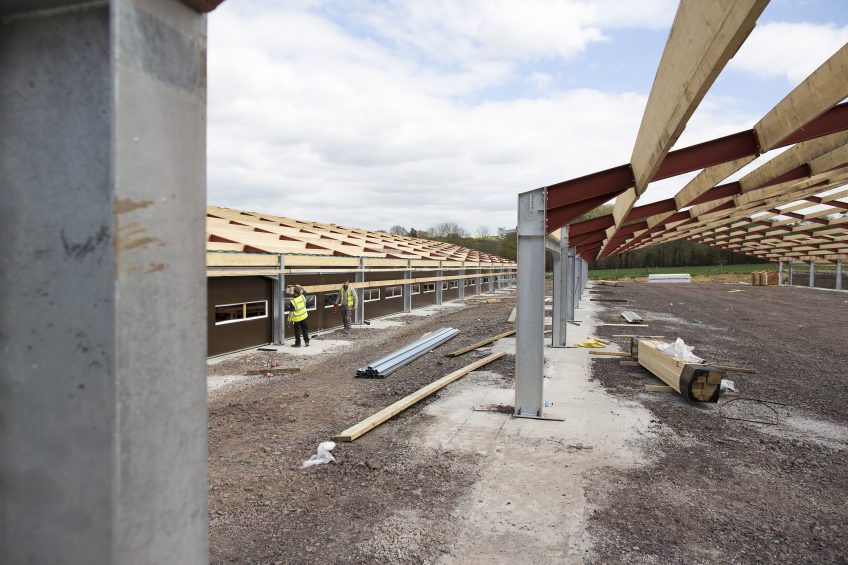The risks and rewards of broiler farming

Investing in broiler units may be a big commitment, but a steady, safe return is on offer for the right farm.
A number of broad acre arable and livestock farmers view the poultry industry with a degree of envy and temptation. So, what is this sector that is reputed to generate a sensible operational return on capital compared to the traditional approach of relying on increases in land prices to maintain a stable balance sheet?
The majority of enquiries to Bidwells go no further than a brief discussion. But for some, developing a poultry enterprise can be a great opportunity.
So what are the key considerations? First and foremost, the motive must be profit and cash generation – do not get side tracked by the ‘nice to haves’, such as recycling organic matter, renewable energy or being able to provide employment for an underutilised member of the family.
In addition, turning the opportunity into reality can present lots of challenges.
Planning and permits
Planning consent and environmental permits are major hurdles. Those of us that enthuse about this very successful industry view a new broiler unit as a thing of beauty; clean, odour- and vermin-free, excellent animal welfare, very good working conditions for staff, blending well into the vista and having a very low environmental footprint. Furthermore, chicken is the most competitively priced meat by some way and the consumer loves it. However, do not expect your immediate neighbours, or even those a considerable distance away, to see it in quite the same way. Their emotional perception will often be of a smelly, rat-infested site with birds struggling to stay alive in appalling conditions. So communicating, informing and educating is a big part of the process.
The processor: Your customer and partner
Do not assume the processors are ‘crying out’ for new producers. They will be very selective based on their supply and demand forecasts, the capacity of their factories and your potential suitability, which may depend on your planning consent, potential scale, location close to the factories and their perception of your management ability.
Management capability is not optional. Broiler production is very precise compared with growing cereals or rearing beef cattle, which is a good thing, but get it wrong and there is a very big cost to pay for underperformance. Another critical issue is the availability of suitable labour now that Brexit is looming. The industry is highly reliant on quality labour from Eastern Europe, many consider this to be the biggest threat to the industry in meeting future demand from UK production.
On a positive note, processors have an ongoing need to replace production from older buildings constructed in the 1980s, to improve productivity and welfare.
Capital and borrowing
Creating or replacing a broiler unit could require up to £1.4m for 100,000 places. In reality 200,000 places must be the ultimate objective at a cost of around £2.5m, so not for the faint hearted; borrowed and repaid over 20 years at 4.5% will require repayments of £192,000 a year.
There are a few specialist construction businesses, meaning building design and the associated equipment is well understood and tried and can be selected from a relatively short menu. So unless the site has particularly difficult aspects, the build cost will be quite predictable. Beware, if the land has to be purchased or the construction cost is significantly higher, the returns are likely to become very marginal.
So will it make money?
Bidwells has a ‘Poultry Model’ that forecasts profit and cash flow as well as a number of other key financial measures by utilising a range of physical performance factors, production costs and prices. This can be used initially to assess the viability of the potential new venture but also to budget and monitor ongoing performance. Cash flow and profit are key performance indicators but if I am to select 2 further measures that influence my thinking and advice they are: percentage return on total capital employed and ‘sensitivity’ to output price, cost of feed and a key performance indicator, namely feed conversion efficiency.

Return on capital
Where a unit is operated by the ‘investor’ farmer, in other words taking production and pricing risk (albeit within a managed contract with a processor), the realistic expectation should be to average in excess of 10% return on capital (calculated correctly to include depreciation of the unit). On this basis should the cost of funds be as high as 5% there is a clear margin, sufficient to generate cash and over the appropriate period to repay debt. At 10% return the payback period is around 9 years.
An alternative is the rental option whereby all inputs are paid by the processor who takes the finished birds. The ‘investor’ owner will be paid a rent equivalent per square foot. Less risk for the investor results in a smaller return on capital, probably nearer 6%.
Sensitivity
The relationship between sale price, feed price and feed conversion efficiency (FCE) is the factor that has the greatest impact on profit. Some processors will insulate producers, as far as reasonably possible, from the volatility associated with costs and prices. At best this will minimise the divergence between the 2, at worse it will soften the blow of rising feeds costs (as now) and falling chicken prices. The FCE will be influenced by a range of factors, some influenced by management, others due to environmental factors but it is important to note that 0.1 kg gain or decline in FCE can have up to +/- 25% effect on profit.
For the right businesses, either replacing buildings or starting a new unit, there are profitable opportunities – just make sure you are the right business.
 Beheer
Beheer




 WP Admin
WP Admin  Bewerk bericht
Bewerk bericht